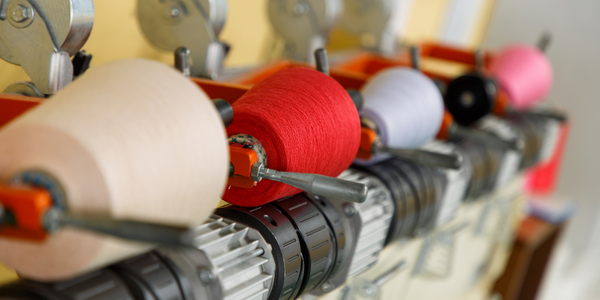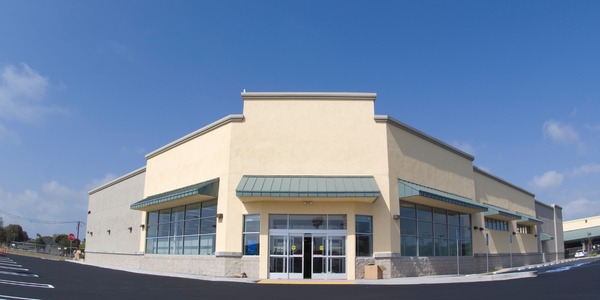技术
- 平台即服务 (PaaS) - 应用开发平台
适用行业
- 服装
适用功能
- 物流运输
用例
- 供应链可见性(SCV)
服务
- 系统集成
关于客户
良好棉花倡议 (BCI) 是一个全球性非营利组织,也是世界上最大的棉花可持续发展计划。 BCI 的存在是为了让全球棉花生产更好地造福生产者、更好地造福棉花生长的环境以及更好地造福该行业的未来。 BCI 旨在通过将更好的棉花开发为可持续的主流商品来改变全球棉花生产。为了实现这一愿景,BCI 与棉花供应链中的各类利益相关者合作,促进环境、农业社区和棉花产区经济的可衡量和持续改善。
挑战
更好棉花倡议(BCI)由阿迪达斯、H&M、宜家、乐施会和世界自然基金会等组织于 2009 年发起,旨在改善棉花产区的民生和经济发展,减少棉花生产对环境的影响,确保该行业的未来。该倡议旨在解决有害作物保护做法、水资源滥用、土壤肥力下降以及童工或强迫劳动等不道德做法等问题。为了实现这些目标,BCI 需要确定一种更可持续的棉花种植方式,并培训农民采用这些技术。 2013 年,680,000 名农民生产了 905,000 公吨更好棉花。我们的目标是到 2020 年将这些数字分别增加到 500 万和 820 万。然而,确保零售商和品牌能够自信地宣称良好棉花是一个挑战。
解决方案
为了应对这一挑战,BCI 为供应链引入了监管链要求,并开发了一个跟踪和追踪系统,称为良好棉花平台,由 ChainPoint 提供支持。该系统涵盖了从轧花厂到零售商的供应链。它是质量平衡管理和所谓的“良好棉花索赔单位”(BCCU) 追踪的结合。在质量平衡系统中,可持续产品的数量在 ChainPoint 中从轧棉厂到纺纱厂进行跟踪。良好棉花平台确保贸易商向纺纱厂出售的良好棉花数量不得超过其从良好棉花轧花厂购买的数量。在纺纱厂,每公斤更好的棉花都会被换成 BCCU。随着良好棉花以纱线、布料和最终产品的形式继续通过供应链,它伴随着这些 BCCU。最后,零售商可以使用良好棉花平台将 BCCU 追溯到发行它们的纺纱厂。
运营影响
数量效益

Case Study missing?
Start adding your own!
Register with your work email and create a new case study profile for your business.
相关案例.

Case Study
Fire Alarm System and Remote Monitoring Sytem
Fire alarm systems are essential in providing an early warning in the event of fire. They help to save lives and protect property whilst also fulfilling the needs of insurance companies and government departments.Fire alarm systems typically consist of several inter-linked components, such as smoke detectors, heat detector, carbon monoxide, manual call points, sounders, alarm and buzzer. The fire alarm system should give immediate information in order to prevent the fire spread and protect live and property.To get maximum protection a shoe manufacturer in Indonesia opted for a new fire alarm system to monitor 13 production sites spread over 160 hectars. Although the company had an existing fire alarm system, it could not be monitored remotely.It was essential that the new system would be able to be monitored from a central control room. It needed to be able to connect to the existing smoke detector and manual call point. Information should be easily collected and passed on to the Supervisory Control and Data Acquisition (SCADA) system. Furthermore, the system should have several features such as alarm management, auto reporting, being connected to many client computers without additional cost, and run 24/7 without fails. The company also needed a system which could be implemented without changing the architecture of the existing fire alarm system.

Case Study
IoT Applications and Upgrades in Textile Plant
At any given time, the textile company’s manufacturing facility has up to 2,000 textile carts in use. These carts are pushed from room to room, carrying materials or semi-finished products. Previously, a paper with a hand-written description was attached to each cart. This traditional method of processing made product tracking extremely difficult. Additionally, making sure that every cart of materials or semi-finished products went to its correct processing work station was also a problem. Therefore, the company desired an intelligent solution for tracking assets at their factories. They also wanted a solution that would help them collect process data so they could improve their manufacturing efficiency.

Case Study
Retailer Uses RFID Scanner to Improve Efficiency
Patrizia Pepe wished to improve the logistics of their warehouse: accepting incoming goods from their production sites, movement of items throughout
the warehouse, and packaging of goods for distribution to the retail locations. They initially tried to use barcodes for this function. Because barcodes must be individually scanned within a line-of-sight, the acceptance of goods coming into the warehouse was too time consuming. Working with the University of Florence, Patrizia Pepe instituted a five-month pilot project beginning in August of 2009 to test the validity of an RFID solution. The pilot involved tagging of about 60,000 items for the second seasonal collection, and convinced the company to move forward with tagging all items.

Case Study
Monitoring and Controlling Automatic Mixing and Dispensing Machines
As technology advances, textile manufacturing has been transformed from a labor-intensive to a partially or fully automated industry. Automation is significant in all segments of textile production - from spinning to printing, and textile machinery manufacturers are constantly searching for new technologies and automation processes will increase the productivity of their machines. The color paste mixing and dispensing machine is an essential part of the printing and dyeing process. With the advantage of automatically computerized controls and database management, the system can significantly improve its dispensing precision, working efficiency and production quality as well as reducing material consumption.









